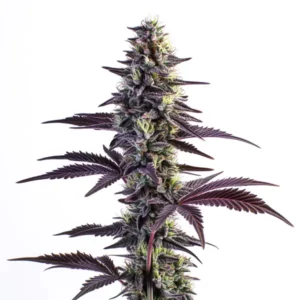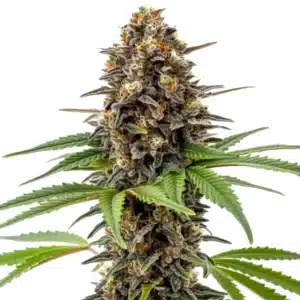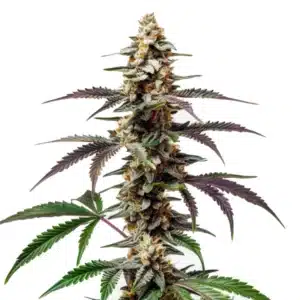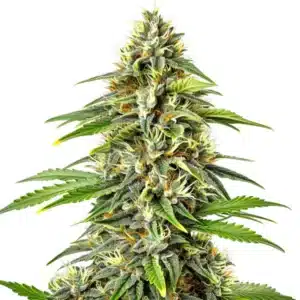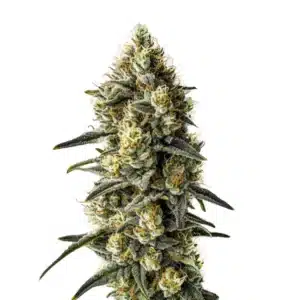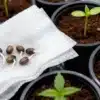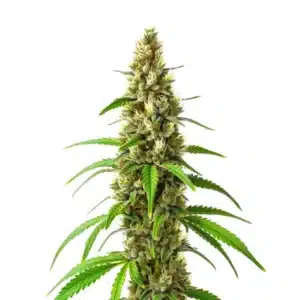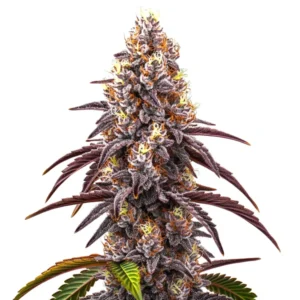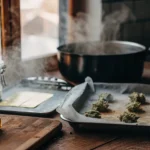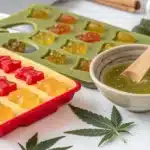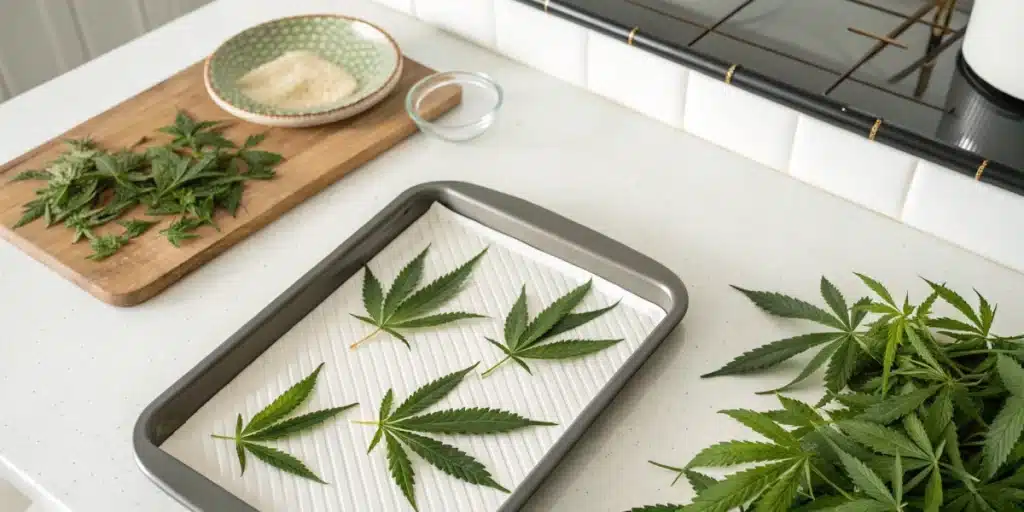
DIY Process: How to Make Marijuana Butter from Leaves
Basics of Marijuana Butter
Marijuana butter, often referred to as cannabutter, serves as a versatile ingredient used in countless recipes ranging from sweet baked goods to savory dishes. This infused butter provides a delicious method to enjoy the benefits of cannabis while elevating your culinary creations. With our expert guide on how to make marijuana butter from leaves, you open the door to a creative cooking adventure that combines classic techniques with modern precision. Every step matters when you aim for a consistent and potent product.
Marijuana butter offers nearly limitless applications in the kitchen. You can spread it on toast, mix it into sauces, or use it to enhance your favorite dessert recipes. Besides its culinary uses, cannabutter provides an effective means for discreet self-medication, delivering both flavor and therapeutic benefits. Our guide explains the process clearly while emphasizing the importance of precise measurements and proper infusion methods that maximize potency and flavor.
Recommended Strains
Blue Grape Fuel
|
|
THC | 24% - 26% (High) |
|
|
Type | Feminized |
|
|
Yield | High |
|
|
Phenotype | 50% Indica / 50% Sativa |
Bruce Banner x Grape
|
|
THC | 15% - 20% (Medium) |
|
|
Type | Feminized |
|
|
Yield | High |
|
|
Phenotype | 45% Indica / 55% Sativa |
Benefits of Using Leaves
When you decide to make marijuana butter from leaves, you might wonder why leaves prove a valuable choice. Cannabis leaves, especially fan leaves, contain cannabinoids and terpenes, albeit in lower concentrations than buds, but they still contribute beneficial properties. Using these leaves not only produces a flavorful butter but also promotes sustainable usage by utilizing parts of the plant that might otherwise go to waste. This method supports eco-friendly practices while enriching your recipes with a distinctive herbal aroma.
Moreover, using leaves for your butter enhances its therapeutic profile and imparts a unique taste that distinguishes it from conventional recipes. The leaves provide a subtle yet distinct flavor that elevates both sweet and savory dishes. Our expert advice reminds you that cannabinoids only dissolve in fatty substances and adhere strongly to fat; they do not dissolve in water. This fact, coupled with precise measurement techniques, forms the foundation for creating a consistently potent cannabutter.
Promos & Deals
Preparation Steps for Marijuana Butter
Gathering Materials and Decarboxylation
Begin your journey by gathering all necessary materials. You will need unsalted butter, cannabis leaves, a reliable saucepan, a fine mesh strainer or cheesecloth, and a suitable storage container. Ensure you measure every ingredient carefully; precision matters because cannabinoids only dissolve in fats and cling tightly to them. Follow the standard ratio provided by our specialist: one cup of butter (approximately 225 g) and 7 to 10 grams of decarboxylated cannabis (using dried, ground flowers, or less if the strain proves very potent). A meticulous approach during this stage guarantees the potency and consistency of your final product.
Decarboxylation plays a critical part in the process. Preheat your oven to about 220°F (105°C) and spread the cannabis leaves evenly on a baking sheet. Bake for 30–40 minutes, turning the leaves halfway to ensure even activation of cannabinoids. This process transforms inactive compounds into active forms, enhancing the butter’s overall strength and effectiveness. Completing decarboxylation properly ensures that your cannabutter will deliver the desired benefits and flavor in every use.
Choosing the Right Ingredients
The quality of your ingredients directly influences the final product. Choose high-quality, organic unsalted butter to achieve superior flavor and health benefits. Unsalted butter gives you complete control over seasoning and other flavors you might later incorporate. Selecting premium cannabis leaves also contributes significantly to the butter’s potency and taste, as their cannabinoid content forms the basis of your infusion.
When selecting leaves, consider the strain and its expected effects. Indica strains might offer a more relaxing sensation, while sativa varieties provide uplifting effects. Experimenting with different combinations can produce unique flavor profiles and desired results. Remember, precise measurement matters, our specialist advises using one cup of butter and 7 to 10 grams of decarboxylated cannabis, to ensure that the cannabinoids fully bind to the fat and produce a consistent, effective butter.

Step-by-Step Cooking Process
Infusion Techniques
Now, you embark on the infusion process—the heart of making marijuana butter. Begin by melting the butter in a saucepan over low heat. Once the butter liquefies, add the decarboxylated cannabis leaves and stir gently. Maintain a low simmer for 2 to 3 hours, ensuring the mixture never reaches boiling point; high temperatures can damage the cannabinoids, diminishing the butter’s potency. Our specialist emphasizes that cannabinoids dissolve only in fat, so continuous stirring helps ensure they adhere to the butter, maximizing extraction.
During the infusion, the cannabinoids and terpenes gradually migrate into the butter, creating a rich, green infusion. Monitor the heat closely and measure the infusion time accurately to avoid overcooking. This delicate balance of temperature and time ensures that your cannabutter develops optimal flavor and strength. Follow the standard ratio rigorously, 1 cup of butter and 7 to 10 grams of decarboxylated cannabis, to achieve consistency and superior results every time.
Straining and Storage Methods
After completing the infusion, proceed to strain the mixture to remove the plant material. Use a fine mesh strainer or cheesecloth placed over a large bowl, and slowly pour the infused butter through it. Press the remaining leaves with a spatula or spoon to extract as much of the butter as possible. This step maximizes your yield and ensures that your cannabutter retains the potent flavors and effects of the cannabis.
Once you strain the butter, transfer it into an airtight container for storage. Refrigerate the butter for up to two weeks or freeze it for extended storage, consider using ice cube trays to portion the butter for future use. By properly storing your cannabutter, you can easily control your dosage and enjoy consistent results in your culinary creations. The careful measurement and preparation during this stage guarantee that every portion delivers the intended benefits.
Tips for Enhancing Flavor and Potency
Additional Flavor Enhancers
To further elevate your marijuana butter, consider adding additional flavor enhancers during the infusion process. You might incorporate herbs like rosemary, thyme, or basil, which blend naturally with the earthy tones of the cannabis leaves. Adding spices such as cinnamon or nutmeg can transform the butter into a delightful addition for sweet recipes, while garlic or chili can create a savory twist perfect for pasta or vegetable dishes.
Experiment with these flavor enhancers to create a butter that suits your taste and desired effects. Our specialist’s advice on precise measurements ensures that you do not overpower the natural flavors of the cannabis. By balancing the quantities carefully and respecting the standard ratio, you maintain the potency of the infusion while achieving a distinctive and appealing flavor profile that complements your culinary endeavors.
Serving Suggestions
Once you complete your marijuana butter, you unlock a world of creative culinary possibilities. A popular option is to substitute it for regular butter in baking recipes such as cookies, brownies, or cakes. This substitution not only introduces a unique flavor but also offers a discreet method of medicating through delicious treats. You can also use the butter in savory dishes by spreading it on freshly baked bread or using it to sauté vegetables.
Experiment with different serving suggestions to discover what best highlights your cannabutter’s qualities. Start with small servings to gauge the potency and adjust your dosage as needed. The infusion of precise amounts of decarboxylated cannabis into a measured cup of butter ensures that you achieve consistent effects, making every bite both flavorful and beneficial.
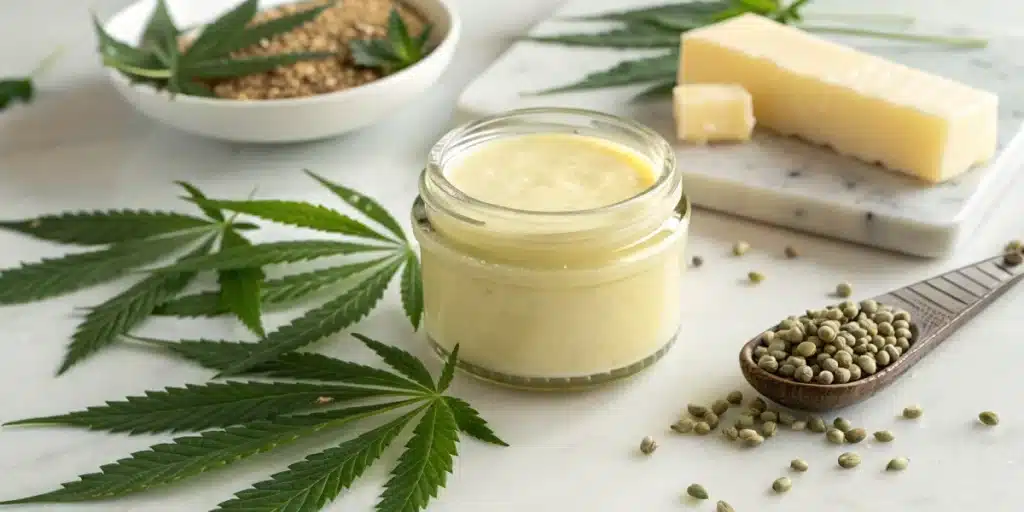
FAQs about how to make marijuana butter from leaves
Can I use fresh leaves for the butter?
Yes, you can use fresh leaves to make marijuana butter, but you must decarboxylate them first to activate the cannabinoids effectively. Fresh leaves require the same careful heating process to unlock their benefits, ensuring your butter reaches the desired potency. Our specialist recommends measuring the ingredients precisely, using the standard ratio of one cup of butter and 7 to 10 grams of cannabis, whether you use fresh or dried leaves. This method guarantees that the cannabinoids properly bind to the butter, resulting in a consistent and effective infusion.
How long does the infusion process take?
The infusion process typically takes about 2 to 3 hours on low heat to allow the cannabinoids to dissolve fully into the butter. A low and steady simmer proves essential for maximizing potency without degrading the delicate compounds. Maintaining precise temperature control is crucial since cannabinoids only dissolve in fat and adhere strongly to it, which is why accurate measurements and timing matter greatly. Follow the standard ratio as advised, 1 cup of butter with 7 to 10 grams of decarboxylated cannabis, to achieve optimal results throughout the process.
What is the shelf life of marijuana butter?
Marijuana butter can last up to two weeks when stored in the refrigerator and several months if you freeze it properly. For extended storage, consider portioning the butter into small servings using ice cube trays. This method not only preserves the butter’s potency but also helps you control the dosage in your recipes. Precise measurement and proper storage ensure that your cannabutter remains fresh and effective over time, allowing you to enjoy consistent results in your culinary experiments.


